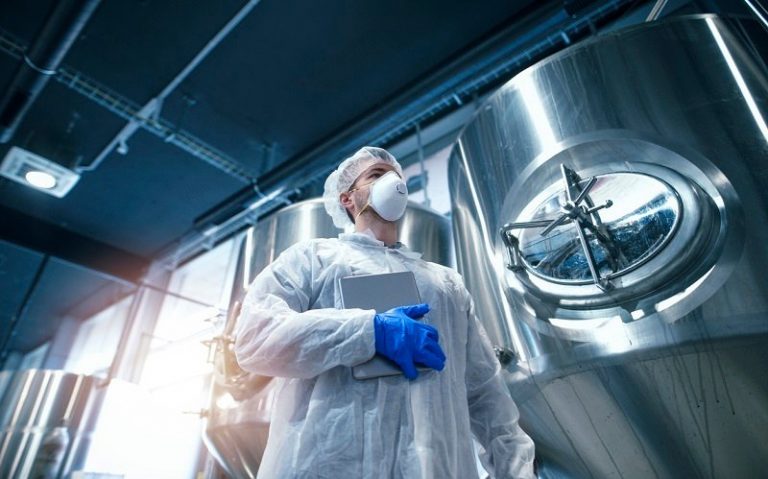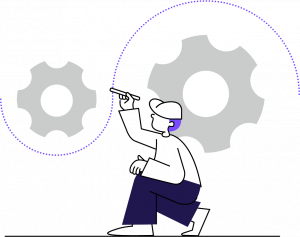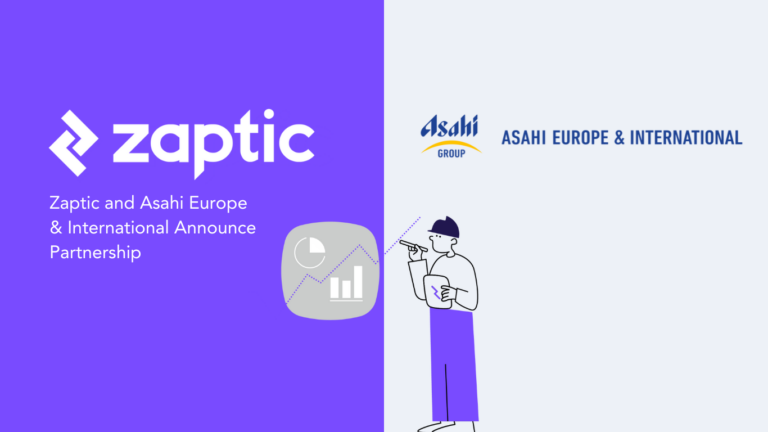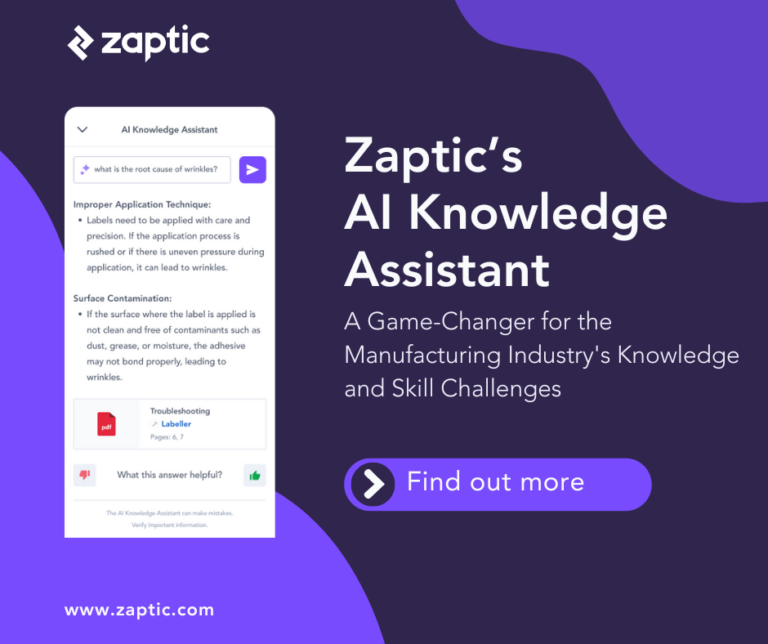
Article originally published in Supply Chain Digital, authored by Georgia Wilson May 01, 2020, 7:39AM. You can find the original article here.
As the outbreak of COVID-19 continues to impact organisations around the world, a leading provider of frontline worker technology – Zaptic – has seen an acceleration in the adoption of its connected worker platform by manufacturers. The company explains that one reason for the adoption of this solution is due to its ability to be deployed remotely and quickly.
As organisations around the world turn to digital collaboration in response to remote working and social distancing, Zaptic sees connected worker platforms as a key part of the ‘new normal’ in manufacturing.
Established in 2015, Zaptic connects frontline teams with job instruction and a modern collaboration experience on the shop floor. Operational users are able to digitise paper procedures and daily management systems using Zaptic’s no code workflow platform, providing a single point of guidance, reporting and communication for frontline workers to execute standard work and problem solve collaboratively.
The platform can also be integrated to – and tasks can be triggered from – other systems including ERP, MES, PLC data and more.
“The result is a faster, more agile digital transformation, and a multimedia repository of institutional knowledge to strengthen engagement and create future factory workforce capabilities,” says Sandy Reid, Chief Customer Officer at Zaptic.
Rob Jones, Operations Manager at Berry Global Llantrisant started deploying Zaptic’s platform in the same week the UK government imposed its lockdown rules.
“The set up itself was easy and despite coinciding with a surge in demand coming from the healthcare sector, the timing has worked out well as we now have the capability to track work, issues and actions remotely.”
Protect, produce and adapt: how Zaptic is helping its customers amidst COVID-19
1. Protect
Digital shift changeovers – To keep employees safe and adhere to social distancing, Zaptic’s customers are moving non-essential face to face contact and daily direction setting meetings online. With this, a key aspect of their lean daily management system has become digital, and will likely remain so after the crisis. “Rather than doing face to face changeovers, we now do digital changeovers. The operators fill out their changeovers and digitally meet to go through their shift passdowns”, says Gary Baltrami, Senior Operations Manager at a large US wine producer.
Health and safety SOPs – Due to HSE procedures being digitally controlled in Zaptic, the company provides its customers with the ability to rapidly adjust or launch new health and safety procedures within days in response to COVID-19, including daily employee self checks, site heat maps and new safe systems of work for equipment and PPE.
In collaboration with the Liverpool School of Tropical Medicine – an authority in infectious diseases – Zaptic is working to provide customers with up to date, expert guidance in the form of ready made daily symptom checkers, laboratory and other equipment cleaning procedures.
1. Produce
Remote Gemba management – with Zaptic, managers can track leading key performance indicators on digital Gemba boards, and assign tasks remotely to solve issues when they arise.
For Rob Jones, Operations Manager at Berry Global Llantrisant, the immediate goal in deploying Zaptic “is to go paperless in the way we escalate and resolve issues to speed up problem solving so that we avoid downtime, customer quality concerns or even worse, accidents and injury.” In addition, “there will be less face to face engagement as issues will be reported at the point of capture, resulting in less time away from the process.”
COVID-19 has placed severe constraints on the “go and see” Gemba culture of Lean manufacturing, meaning that only those with good digital information flows have been able to maintain continuity in this aspect of operational excellence.
For Gary Wightman, Plant Manager at P&G’s Pampers factory which first deployed Zaptic in 2018, the challenges they’ve faced during COVID-19 also represents an opportunity, as “it shows that an increase in productivity is possible with more focused priorities, good information flow and management.”
Interactive troubleshooting and training – “Troubleshooting information can also be accessed with just a swipe of a tablet screen to the point of use on a specific area and specific production line, helping to reduce downtime during the crisis and beyond to ensure strong business continuity and delivery of essential products to our consumers in the UK”, says Gary Manchester, a Senior Engineering Manager at P&G’s Pampers factory. Face to face training and shadowing is also off limits during this time, increasing reliance on virtual or video based training delivery.
3. Adapt
Skills and process flexibility – “Traditional spreadsheet based skill matrices just don’t cut it amidst the kind of labour disruption caused by the pandemic,” says Reid. Zaptic stresses the importance of understanding skill gaps and quickly on-boarding workers to new procedures being a key element of process flexibility,
“especially for those manufacturers who have pivoted from non-essential to essential items during the crisis.”
Zaptic sees the value of interactive, on-the-job instruction grow as the trend of product customisations increases the need for speed when it comes to production line changes, new installs and ultimately, time to market of new SKUs.
Closing the Industry 4.0 blindspot – “One of the clearest benefits delivered to Zaptic’s customers is to unlock a wealth of operational data which was previously trapped in paper, spreadsheets or tribal knowledge,” comments Reid. Zaptic calls this an “Industry 4.0 blindspot”, and believes that in an era where manufacturers have the opportunity to leverage AI and machine learning to improve operations, those who solve this blindspot have a massive competitive advantage over those who don’t.
“It means putting humans at the center of Industry 4.0, and this is exactly what a connected worker platform like Zaptic enables,” concludes Reid.











